Developer: Nintendo EAD Publisher: Nintendo Release: 08/23/91 Genre: Simulation
There were many gimmicky titles released early in the Super Nintendo’s life. Mode 7 was the new buzzword and everyone shoved it into their games, sometimes haphazardly. I like Super Castlevania IV but the game is gratuitous with its special effects and borders on being a tech demo at times. However two of its launch titles show not only was it not a gimmick but a viable means of creating games not possible before. As much as I like F-Zero Pilotwings is the most interesting of the pair. Pilotwings is brilliant in its design and still remains somewhat unique today. It also stands the test of time and is a great game.
Where most games shoehorned in Mode 7 effects for shock value Pilotwings serves as the perfect proof of concept. The simulated 3d environment was jaw dropping for its time and tooling around in the hang glider and rocket belt was unlike anything that came before it. The rotation and scaling effects were mind blowing but more importantly served gameplay purposes. Tying it altogether was a nice, relaxing soundtrack that helped to avoid the stress that came with failure. It’s not a particularly memorable soundtrack but serves the game well.
Pilotwings is a flight simulator first and foremost, not an action game. As a rookie the player enters an amateur flight school to complete certifications in activities to earn their pilots license. These challenges involve multiple vehicles: the biplane, hang glider, rocket belt, and skydiving. There are multiple grades with each featuring a different instructor. Earning a license in each involves beating a minimum score to progress to the next certification. Your performance is graded in a variety of criteria; time, accuracy, targets reached, etc.
Each activity has its own unique mechanics and challenges. Skydiving is the simplest as you ascend thousands of feet and drop. The goal is to pass as many rings as possible and land in the target area for the highest score. It sounds easy but it’s tougher than it looks as your speed and the wind play a factor. The rocket belt is probably the most fun. Here you have free reign around a 3d environment to pass through rings and later land on the target zone. The mechanics are very fun; you control forward thrust and speed and can even change camera modes for accuracy. Controlling the rocket belt the first time was one of the most exciting times I ever had during that period and it is still amazing what they accomplished with such tech.
The Light Plane quickly becomes the most involved despite its simplicity. You follow a series of orbs around a set course and must land the plane to finish. Approaching the runway for a landing is always a nerve wracking experience no matter how many times I’ve done it. If the intention were to recreate the drama of that moment in real life they succeed. I have never been partial to the hang glider. Ascending to the necessary height always seems random despite its simple mechanics. I realize this is a personal failing as plenty manage it easily.
Part of the success of Pilotwings is its intuitive controls. Despite the complexity of the tasks involved you are only ever using three buttons at most. Yet there is still plenty of room for nuance for skilled players to eke out some extra points. The events become fairly involved very quickly so the hidden depth plays a factor in your success. For its time there really was not any other game on the market that could match the freedom of Pilotwings outside of a high end PC. Much ado was made of Mode 7 and this was that potential realized.
The game may seem short at first but there is plenty of content. Once you receive your certification the final mission involves rescuing your instructors. This mission is the only action sequence in the game as it involves destroying targets with your helicopter. It’s actually more mechanically sound than in similar full games and a nice break from the otherwise rigid mission structure. Once complete the expert missions become available. These lessons take place at night and offer new challenges such as varying weather and higher point requirements. If you can complete these you truly deserve your golden pilots wings.
The one factor you’ll have to deal with is the high difficulty. Pilotwings features a steep difficulty curve that ramps up almost immediately. After the initial two events you are literally thrown to the wolves and tasked with performing complex maneuvers with no practice. The point requirements for each license become steeper and the scoring a lot harsher. It is not unmanageable but happens so suddenly. Luckily the game’s mechanics are simple enough to pick up quickly, meaning you’ll adapt fast. I still with the curve was more gradual; I do not blame anyone for giving up once they reach the expert exams.
Pilotwings is a brilliant game, the type usually only on PCs. Leave it to Nintendo to pare down the complexity and make it accessible, creating one of the most original titles in the SNES library in the process.


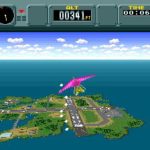
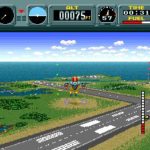
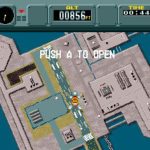
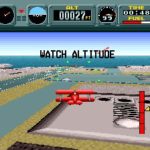
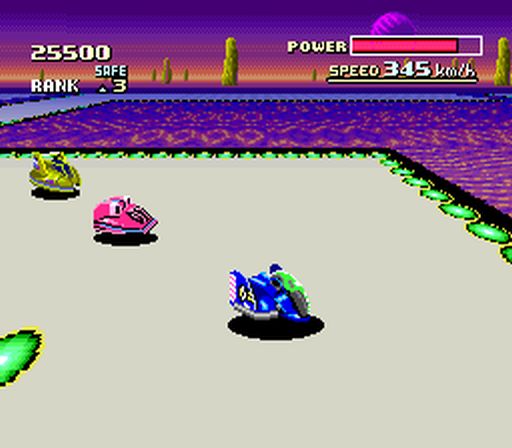

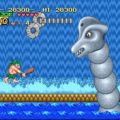
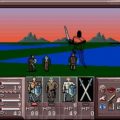
One thought on “Pilotwings”